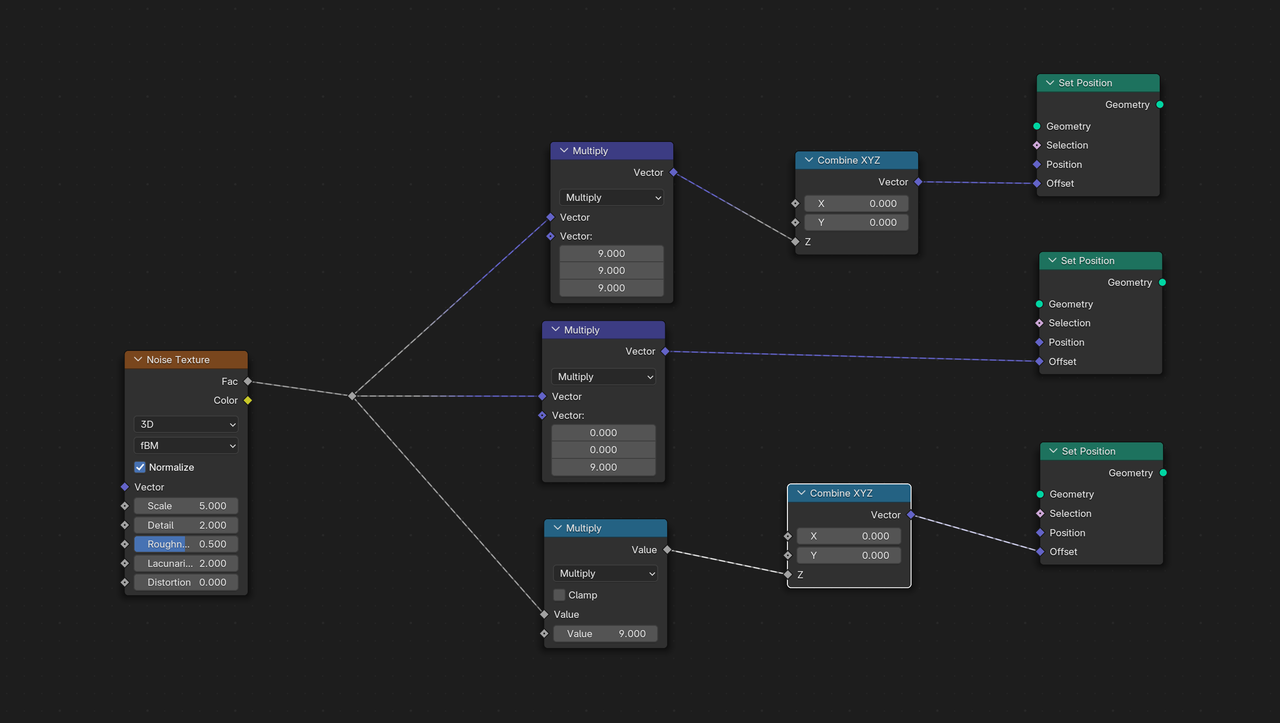Why would you use the multiply vector which is already decomposed and then split it using the combine node? As far as I can tell, the combine node can be removed and then the multiply vector is (0,0,9). Right now its (9,9,9) followed by combine (0,0,Z)--that's unnecessary right? Or I misunderstand how the combine vector works?
Hi Lauren, I haven't taken this course yet, but it sounds to me like you are absolutely right.
Both get the same result, so it's not that one of the methods is wrong, but I'd also use your way, if only because it is cleaner (I really don't like plugging a Vector Output (from the Vector Multiply) into a Value socket (the Z from the Combine Node))
Yes cchabi-fin you are correct, there is not always a need for the Combine XYZ node.
Sometimes you may want access to the individual channels of a vector input on a node, which the Combine XYZ node allows.
Have you tried removing the Combine XYZ node and using only the Z channel of the Vector Math node?
Notice there is a difference in the result when using the same value with and without the Combine XYZ node.
In this case the Combine XYZ also allows for a more precise control of the result.
I had to do a double-take on this myself, but after testing both approaches, it seems like the Combine XYZ node is needed to preserve the zeros in the X and Y dimensions. Without it, streaming the result of multiplication directly to the Set Position's `Offset` input will shift the points along all dimensions -- which isn't what we want if we're just bouncing the grid straight up and down.
Hi ![]() CypherPoet ,
CypherPoet ,
Please correct me if I'm wrong, but as far as I can tell, these 3 Node combinations, give the exact same result:

To be clear, the middle one is what Lauren suggested.
(And there are of course many other ways of doing this.)
Ah, sorry, you're absolutely correct, Martin. I might have misread a few of the details in the original question -- but thanks for visualizing it so clearly! 😀